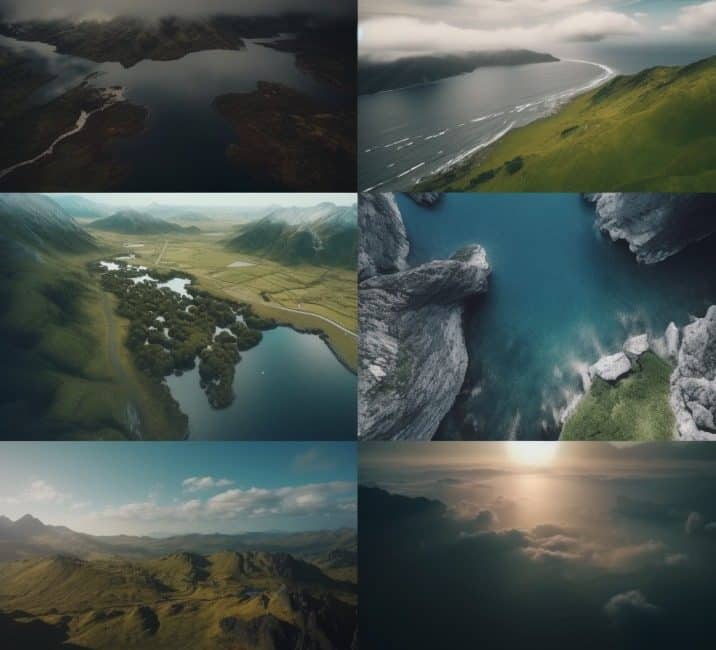Drone photography has opened up a whole new world of possibilities for capturing stunning aerial landscapes. With the ability to soar above the ground and capture unique perspectives, professional drones have become a game-changer for photographers. In this article, we will provide you with some tips to help you capture breathtaking aerial landscapes with your professional drone.
- Plan and Scout Locations: Before heading out with your professional drone, it’s essential to plan and scout potential locations. Use online maps or scouting apps to identify areas with interesting landscapes, such as mountains, lakes, coastlines, or urban skylines. Pay attention to weather conditions and choose a time when lighting conditions will enhance the scene.
- Understand Drone Regulations: Familiarize yourself with local professional drone regulations and airspace restrictions. Ensure you have the necessary permits or permissions to fly your professional drone in the chosen location. Adhering to regulations not only keeps you out of trouble but also ensures the safety of people and property.
- Use the Golden Hours: The golden hours, which occur during sunrise and sunset, offer the most beautiful light for landscape photography. The warm, soft light during these times adds a magical touch to your aerial images. Plan your flights accordingly to capture the stunning colors and long shadows that these hours provide.
- Experiment with Composition: Composition plays a crucial role in creating compelling aerial landscapes. Take advantage of leading lines, such as roads, rivers, or coastlines, to guide the viewer’s eye through the frame. Look for interesting patterns, shapes, or textures that add visual interest to your images. Experiment with different angles and perspectives to create dynamic compositions.
- Utilize the Rule of Thirds: The rule of thirds is a fundamental principle of photography that applies to aerial landscapes as well. Imagine dividing your frame into a grid of nine equal parts using two horizontal and two vertical lines. Place key elements of interest, such as mountains or buildings, along these lines or at their intersections to create a balanced and visually appealing composition.
- Incorporate Foreground Elements: Including foreground elements can add depth and interest to your aerial landscapes. Look for elements like trees, rocks, or other objects that can serve as anchor points in your composition. They help provide a sense of scale and add a three-dimensional feel to your images.
- Experiment with Camera Settings: Take advantage of your professional drone’s camera settings to capture the best possible images. Shoot in RAW format to maintain maximum image quality and flexibility during post-processing. Adjust the exposure settings to achieve the desired balance between highlights and shadows. Experiment with different shutter speeds to capture motion blur or freeze fast-moving subjects.
- Master the Art of Post-Processing: Post-processing is an integral part of professional drone photography. Use editing software to enhance your images, making adjustments to exposure, color, and contrast. Be careful not to overdo it, as natural-looking images tend to be more visually appealing. Develop a consistent editing style that complements your vision and enhances the beauty of your aerial landscapes.
Remember, practice makes perfect. Spend time honing your skills and experimenting with different techniques. With patience and persistence, you’ll be able to capture stunning aerial landscapes that will leave viewers in awe of the beauty and unique perspectives that professional drones can offer.




